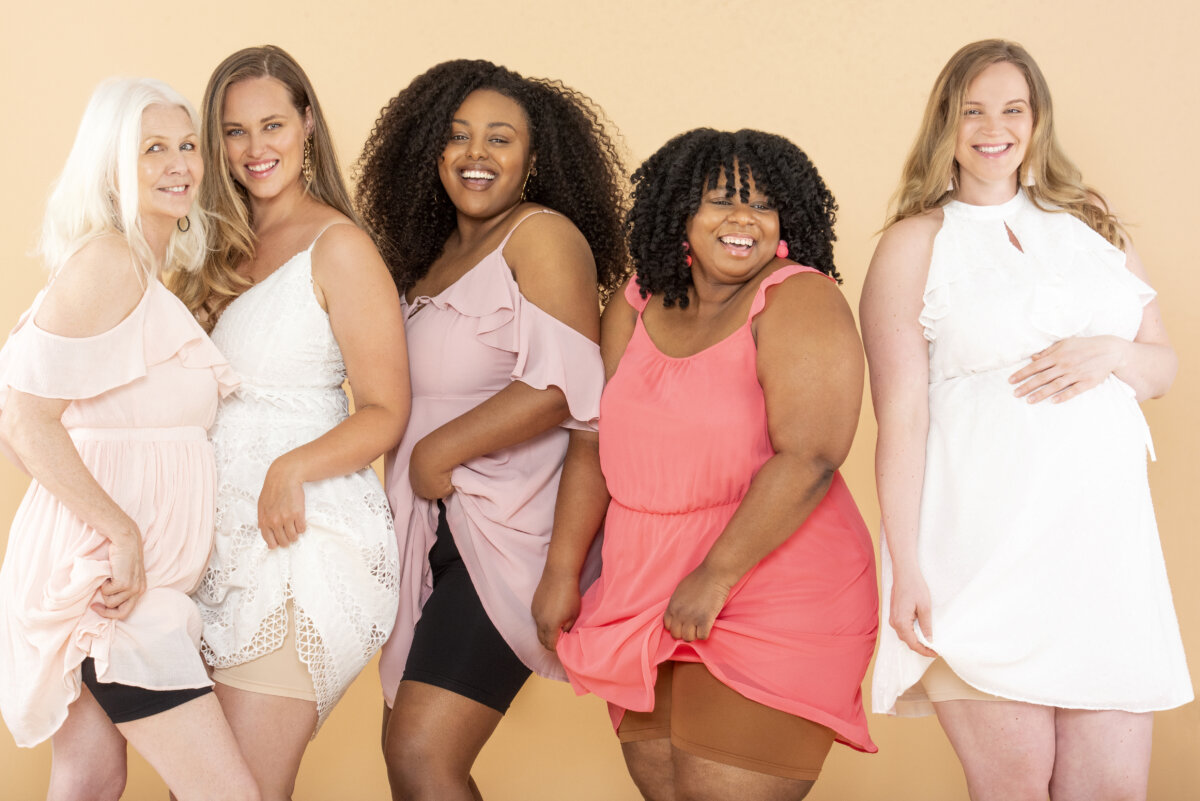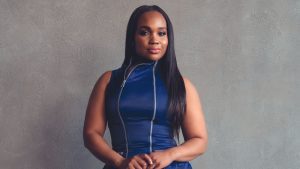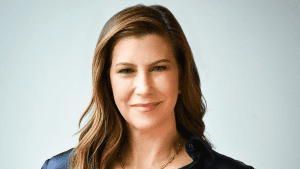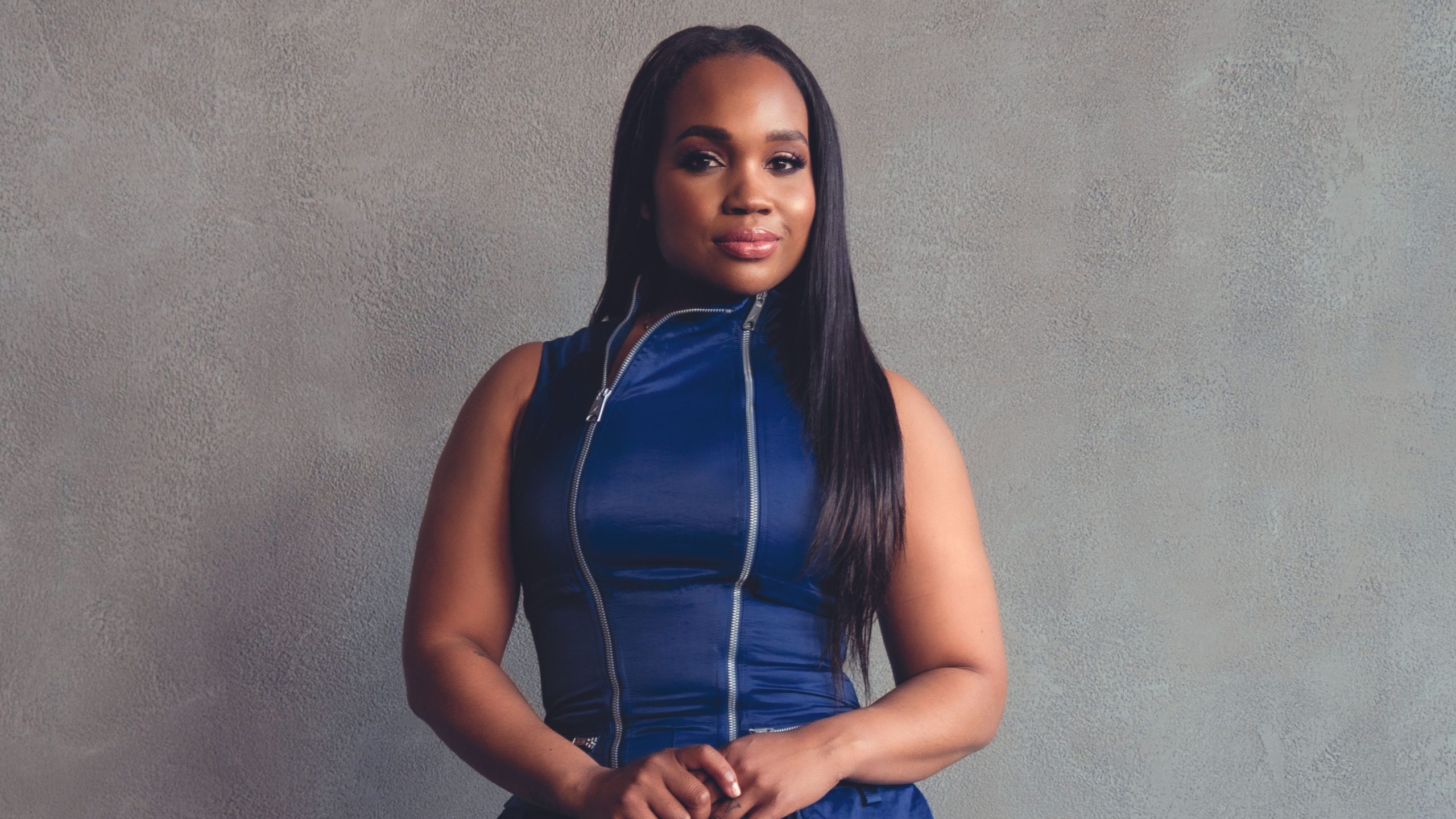[vc_row][vc_column][vc_column_text]It’s an issue that thousands of people deal with on a regular basis. A little bit of friction, the right amount of moisture and with enough time, you’ll feel it. The burn of a thigh chafe is comparable to no other. Despite the skin condition being widely experienced by so many, the topic remains taboo for those who experience it. Marnie Consky, Founder and CEO of Thigh Society, is working to change that.
It was a hot summer’s day in Toronto somewhere along Wellesley Street, when Marnie began to feel the incessant burn. Before long she was waddling into a nearby Shoppers Drug Mart to find a product that would offer some relief. When she got back to the office with the powder she had purchased, the messy application made her think there had to be a better solution.
“I thought about the ratty old pair of biking shorts that I keep in my drawer at home that I would usually wear underneath my skirts and dresses and cringed at the thought,” says Consky. Knowing that the inadequate powders and lotions were no better than the hot biker shorts she hated wearing, she began to imagine an article of clothing that could solve the problem.
A summer of research and tens, if not hundreds, of department stores later Consky became what she describes as a reluctant entrepreneur developing what is now Thigh Society, a collection of lightweight breathable slip shorts, that stop chafing before it starts.
11 years later, Thigh Society is well known for its inclusive marketing and buttery barely-there feel – Chafers everywhere rejoice!
Although chafing is a skin condition that anyone regardless of shape or size can experience, it has held a strong stigma and negative connotation in relation to body image. During market research, Consky noticed that the misconception not only made customers uncomfortable but brought up issues of body positivity.
“The reality is it has nothing to do with your size,” says Consky, “Many times when I would speak with women wearing sizes 18-22 they had never experienced or even heard of chafing. Immediately I became determined to destigmatize the condition and redefine it as what it really is, a normal skin condition.”
Now instilled in the company’s mandate and mission is a marketing strategy that works to help women and those who have the skin condition, improve their self perception and understanding of the condition.
In this week’s Women Who Lead spotlight, we spoke with Marnie Consky about how brands influence body positivity, what’s next for Thigh Society and the importance of knowing your audience when building a brand.[/vc_column_text][vc_text_separator title=”Q & A” color=”pink”][vc_column_text]
From your perspective, what were the biggest shortcomings in anti-chafing products and how has that informed your venture with Thigh Society?
We’ve all been in a situation where chafing would start and we had to find some sort of inadequate solution to relieve the discomfort.
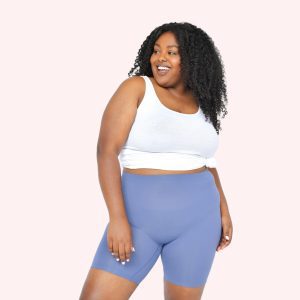

When I started Thigh Society I spent an entire summer scouring the internet, which was quite limited in 2009, and pounding the pavement, going to all kinds of different boutiques and department stores looking at different brands to see if they sold a long leg boxer brief for women that would solve the problem. Besides shape-wear, which is tight, hot and uncomfortable, there was nothing. I was just a woman with a problem that I couldn’t solve and couldn’t find a solution to. Even as I spent the summer trying to research this, I was a reluctant entrepreneur secretly hoping that I would find a product that would be the answer to all of my prayers. I didn’t want to start the business, but ultimately in my search I was led down the path of starting Thigh Society.
I do want to talk to you about your messaging and how inclusive your product is. What made you focus on creating a product that is inclusive with the marketing to match?
It always makes me happy when people appreciate and realize that we aren’t just talking. We have been body positive and showing it through our marketing and branding since day one. Which has been largely driven by the general concept of the product.
In my initial discussions, even before I had a prototype, what I was noticing is that there was a lot of shame and stigma attached with suffering from chafing. Women would talk to me in hushed tones about it when I would ask them, ‘Hey, do your thighs ever rub together?’ As soon as I opened the Pandora’s box, they would start spilling it like, ‘Oh yeah! I totally have that it’s the worst!’. It was always something they would equate to their weight shifting or things like childbirth. It was upsetting because really, even for myself who has fluctuated from a size six to a twelve, my size never mattered. It was a pure function of anatomy based on your degree of skin sensitivity when exposed to sweat and moisture.
It was essential for me to represent diversity in our marketing because this condition can apply to anybody. If I wanted to sell these products to customers of various sizes and various ethnicities, at various ages I would have to represent those people and do so accurately in our branding. It has always been a core value of the company. Now we offer sizing between extra small and six XL, which I’m super proud about.
It’s quite revolutionary and innovative for a clothing brand to say, ‘We’re going to be a part of your body positivity journey.’ What inspired that specifically?
I think it really comes down to the genesis of this idea. When I’m speaking to women today,11 years later, it’s interesting to me that when the topic of thigh chafe comes up, in most cases, people’s automatic reaction is some sort of negative feeling towards themselves or their bodies. It’s this instantaneous reaction that they feel that there’s something inadequate or less than about their body because their thighs chafe. I don’t want women to waste a single minute of energy thinking negatively about their body when there is no reason for it at all. So if we can continuously remind our customers and women that this is a totally normal skin condition and you don’t have to feel bad about yourself because this happens to you, it can help towards feeling more body positive – and that makes us happy.
We want to reverse that narrative. You don’t think your body’s inadequate because when you perspire you put on deodorant because it’s a normal function of the human body. So why wouldn’t we think the same thing about chafing? It’s very easy to look at different brands that we love, and subconsciously not realize that we’re internalizing some of the messages that we’re seeing from those feeds. Whether that means we’re internalizing one specific body type, one specific ethnicity, one specific age, ability, or sexuality. I strongly believe that the more we expose ourselves to a variety of diverse bodies, and all that entails, we will start to change our perception of beauty and become both as a society and as individuals, less judgmental of others and less judgmental of ourselves.
We’ve seen in recent years the term ‘social cleanse’ come about where people remove triggering and harmful imagery from their social media feeds. Why do you think this is?
People don’t realize it, but it really starts with the feed. You can say, ‘I watch the news every day and I keep up with what’s going on through that medium,’ but the reality is most of your information and media consumption comes from Instagram, Facebook and Twitter. This can heavily impact you based solely on who you are following. Does the marketing that these brands are showcasing project a realistic and diverse aesthetic? And how much of a difference does that make for you are the end of the day? It’s Huge.
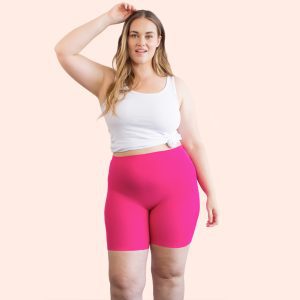

Pivoting a bit to talk about your journey from a business perspective, what was your career like before launching Thigh Society? How do you feel your previous experience has helped you manage this venture?
I would say my background is a mix of consulting and strategic human resources within the private sector, the public sector and the academic sector. What I really took from that and applied to Thigh Society was my role as what is now called an in-treprenur. Unbeknownst to me at the time, I was often put in roles that were very undefined where they would set a specific goal but without a clear path on how to get there. I was given a lot of autonomy by my managers and would essentially come up with a roadmap that would get us from point A to point B. I was naturally well suited for that kind of work and I enjoyed it a lot. Now as an entrepreneur that experience has made me comfortable with uncertainty, which is a huge part of running a business from the ground up.
What was the testing process like when developing your product line. Thigh Society has a number of options from sheer to cotton made. How did you ensure that all variations worked across your range of body types?
Our whole production uses seamless knitting machines, unlike traditional cut and sew patterns where you cut fabric and then sew them together, we decide what the fabric recipe will be and our seamless machines knit the fabric for us. This is what creates our very stretchy breathable products. We then instilled the same philosophy we were using 11 years ago when I started the business, and tested not just one prototype, but multiple prototypes in different sizes, on a sample group of real women – not just mannequins. We have real product testers that cover the full range of sizes for each short variation. It could be size Small, Large or up to 6XL models who wear-test the samples and then provide feedback that we take in directly and implement back into the design and overall feel.
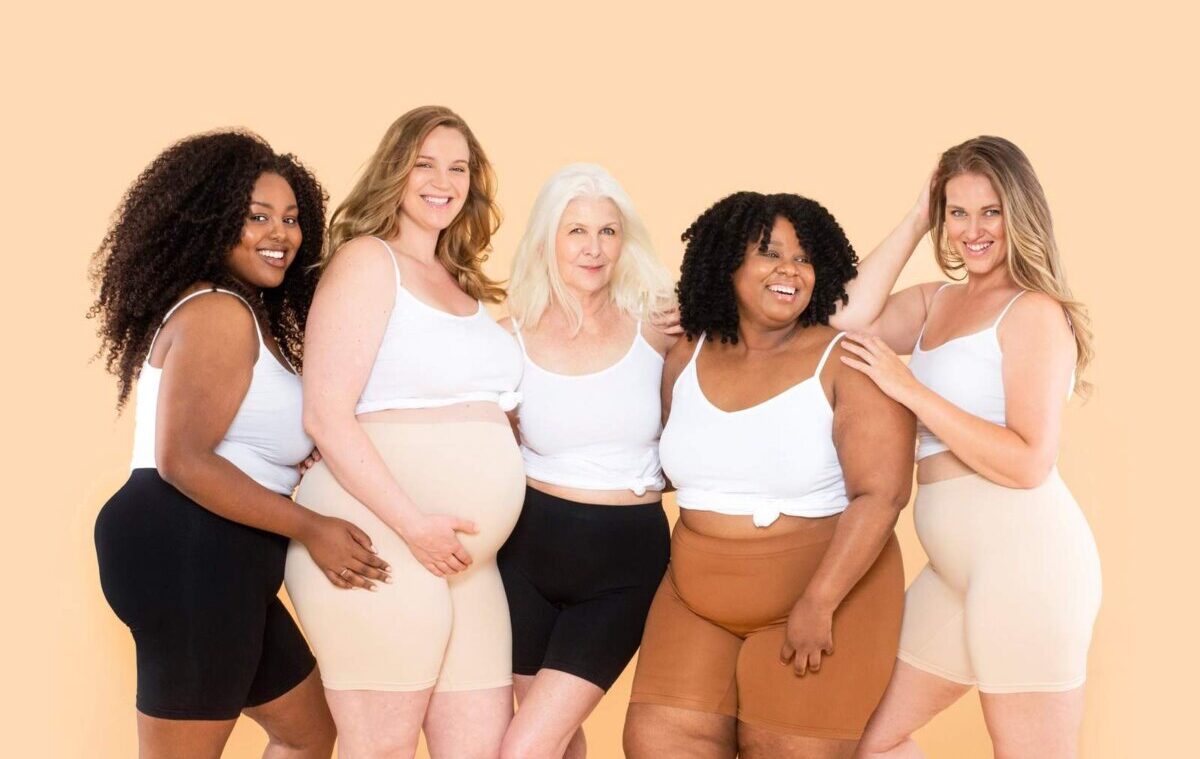

How do you want Thigh Society to change the game when it comes to chafing products?
I would love thigh society to become a household name and be known as the best long leg boxer brief for women. By being the best, I mean we are solving the problem of thigh chafe in the best way possible. We want to be that undergarment that you pull out of your underwear drawer when you want something that is guaranteed to prevent thigh chafe by being lightweight, breathable, moisture, wicking, seamless, and totally comfortable all day long. The best compliment that customers can give to us after they’ve tried our product is that they totally forgot they were wearing the shorts – and that is our goal: to be completely forgettable once they’re on.
What advice might you give another woman in business on breaking the status quo, whether it’s in a field that is saturated like the clothing market, or a tried and true system that’s not very open to change.
I think when you have a good idea and there is a need for it in the market, do some testing to figure out how other big brands and companies are not meeting that need and go from there. You need to go for it because you can’t assume that because it doesn’t exist, there isn’t a need for it.
What do you feel makes a good business and a successful entrepreneur?
If only I knew! (laughs) I see this as something I’m still figuring out. There are two things I believe to be genuinely true; to be a good entrepreneur, you have to have curiosity and resilience. You have to be curious because you are often the one trying to figure things out, especially at the beginning when you’re functioning as a solo-preneur. Having the desire to want to figure things out and having that curiosity to learn new things being something that drives you and doesn’t exhaust you is very important. If that thought is something that exhausts you, maybe bringing on a business partner with complimentary skills who can tackle some of those demands is best. There is no right answer but you have to be very realistic about who you are and what your strengths and weaknesses are. [/vc_column_text][/vc_column][/vc_row]


